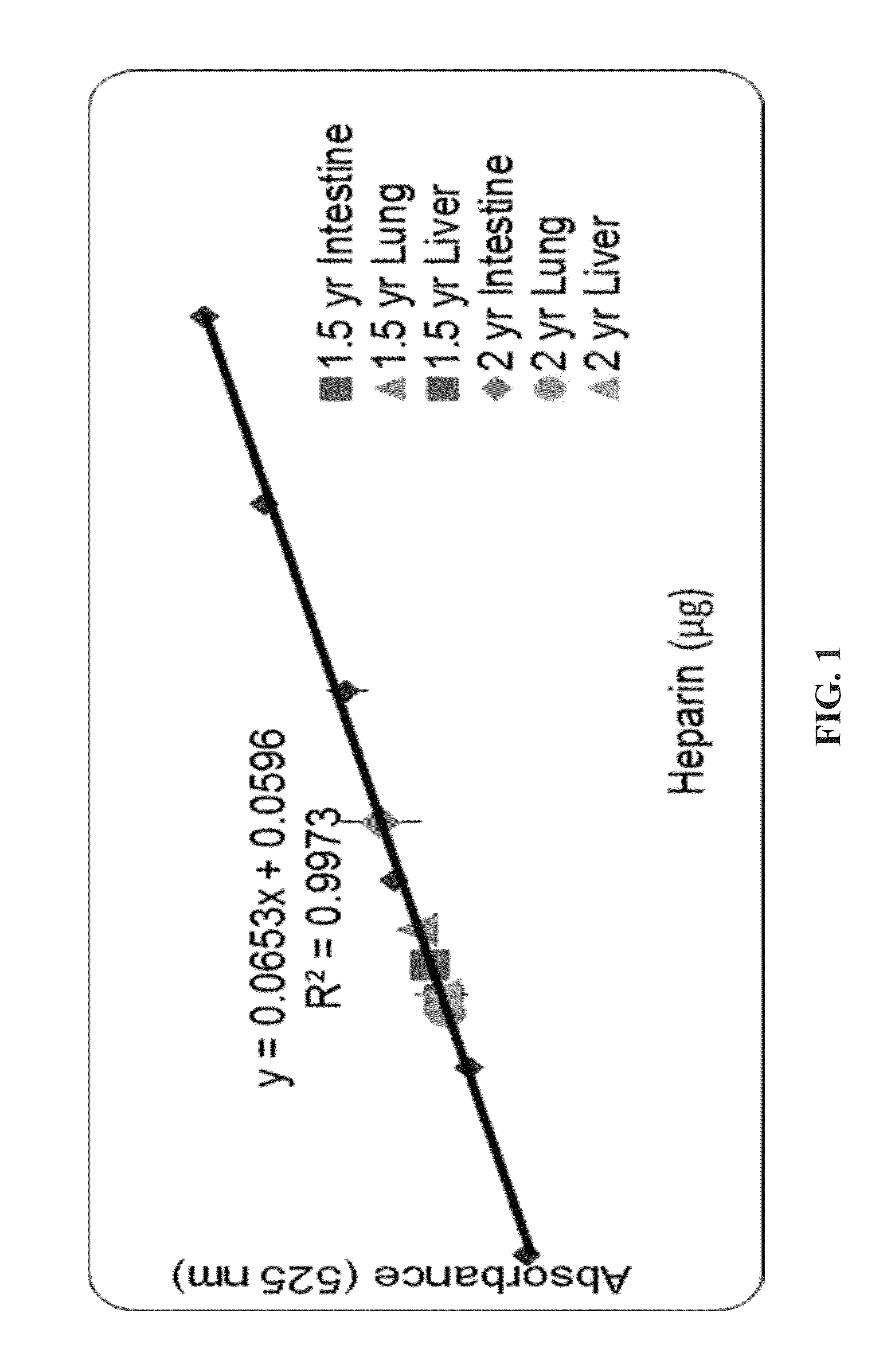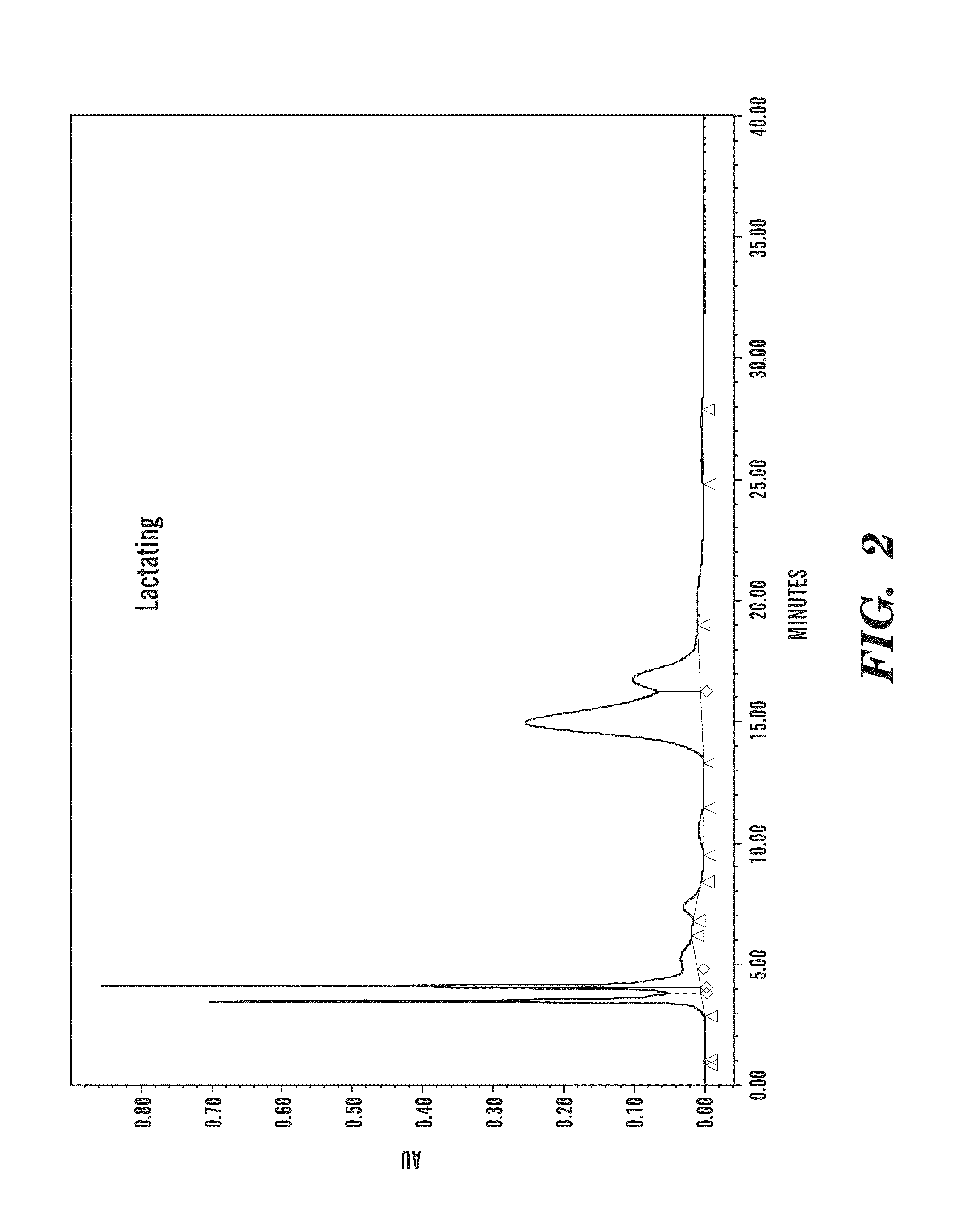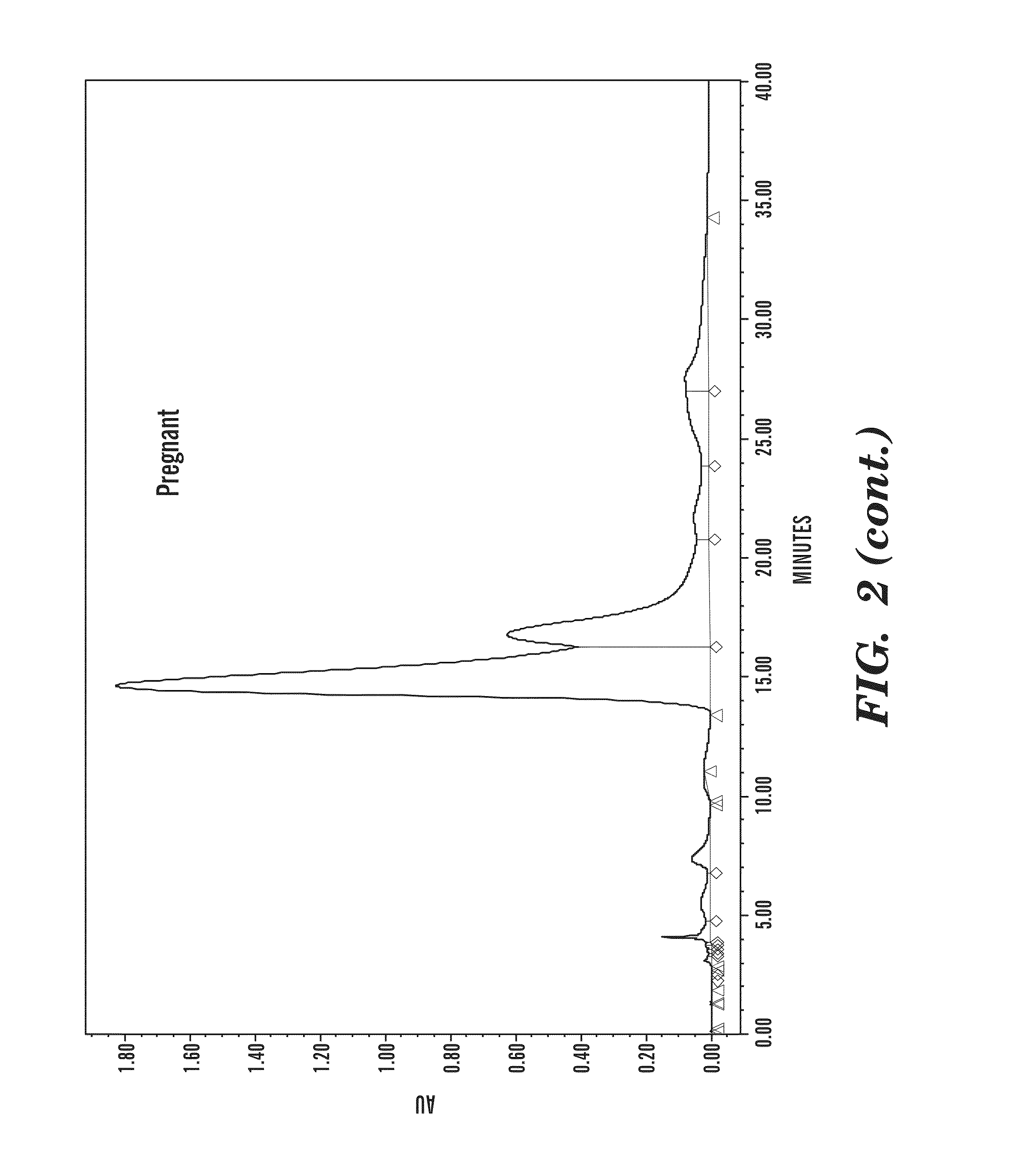Methods and compositions of camel derived products
a technology of camel milk and composition, applied in the field of nanoparticles, can solve the problems of severe systemic toxicities, difficult control, micro-sized particles,
- Summary
- Abstract
- Description
- Claims
- Application Information
AI Technical Summary
Benefits of technology
Problems solved by technology
Method used
Image
Examples
example 1
Isolation and Structural Characterization of Glycosaminoglycan's (GAGs) from Camel Organs
[0082]GAGs were isolated and purified by using a three-step recovery and purification scheme. The procedure relied on proteolysis, ion-exchange spin column purification, and methanol precipitation. The recovered GAG samples were then analyzed with carbazole assay, polyacrylamide gel electrophoresis (PAGE) and LC-MS disaccharide analysis.
example 2
Isolation and Purification of GAGs
[0083]Camel organ samples were lyophilized to remove excess water. Fat was removed by washing tissues with chloroform / methanol mixtures [2:1, 1:1, 1:2 (v / v)] each left overnight or for a minimum of 12 h. Liver samples were defatted; after digestion, solubilized GAGs were extracted from the tissue mixture and lyophilized, and then processed. Defatted samples were individually proteolyzed at 55° C. with solutions of Actinase E. Samples were then centrifuged and the supernatant was filtered through a 0.45 μm filter (Millipore) to remove solid particulates. After filtration, samples were lyophilized. GAGs were extracted from the isolated solids via strong anion exchange chromatography (SAX) using Vivapure Q Maxi H spin columns and collected via methanol precipitation (80% methanol (v / v) solution at 4° C. for 24 h). The resulting precipitate was isolated by centrifugation. The precipitate was reconstituted in deionized water and analyzed by carbazole ass...
example 3
Fractionation of Different Sources of Camel Urine
[0084]A standard curve consisting of various concentrations of heparin and samples of each organ isolate were mixed with sulphuric acid, which cleaves the glycosidic bonds, thereby breaking the carbohydrate chain into its composite sugar residues (FIG. 1). The uronic acids present in the mixtures then undergo a colorimetric reaction with carbazole, allowing the carbohydrate content in each sample to be quantitatively assessed.
[0085]FIG. 1 depicts a carbazole assay calibration curve, in accordance with embodiments of the present invention. The graph in FIG. 1 shows the absorbance at 525 nm for various concentrations of camel heparin and the calculated amount of GAGs in each sample.
[0086]Analysis of the different GAG contents in camel urine and milk fractions were carried out using various HPLC and preparative columns.
[0087]FIG. 2 depicts chromatograms of camel urine (20 μA) from different sources of camels which were assayed by normal-...
PUM
| Property | Measurement | Unit |
|---|---|---|
| Fraction | aaaaa | aaaaa |
| Fraction | aaaaa | aaaaa |
| Percent by mass | aaaaa | aaaaa |
Abstract
Description
Claims
Application Information
 Login to View More
Login to View More - R&D
- Intellectual Property
- Life Sciences
- Materials
- Tech Scout
- Unparalleled Data Quality
- Higher Quality Content
- 60% Fewer Hallucinations
Browse by: Latest US Patents, China's latest patents, Technical Efficacy Thesaurus, Application Domain, Technology Topic, Popular Technical Reports.
© 2025 PatSnap. All rights reserved.Legal|Privacy policy|Modern Slavery Act Transparency Statement|Sitemap|About US| Contact US: help@patsnap.com



